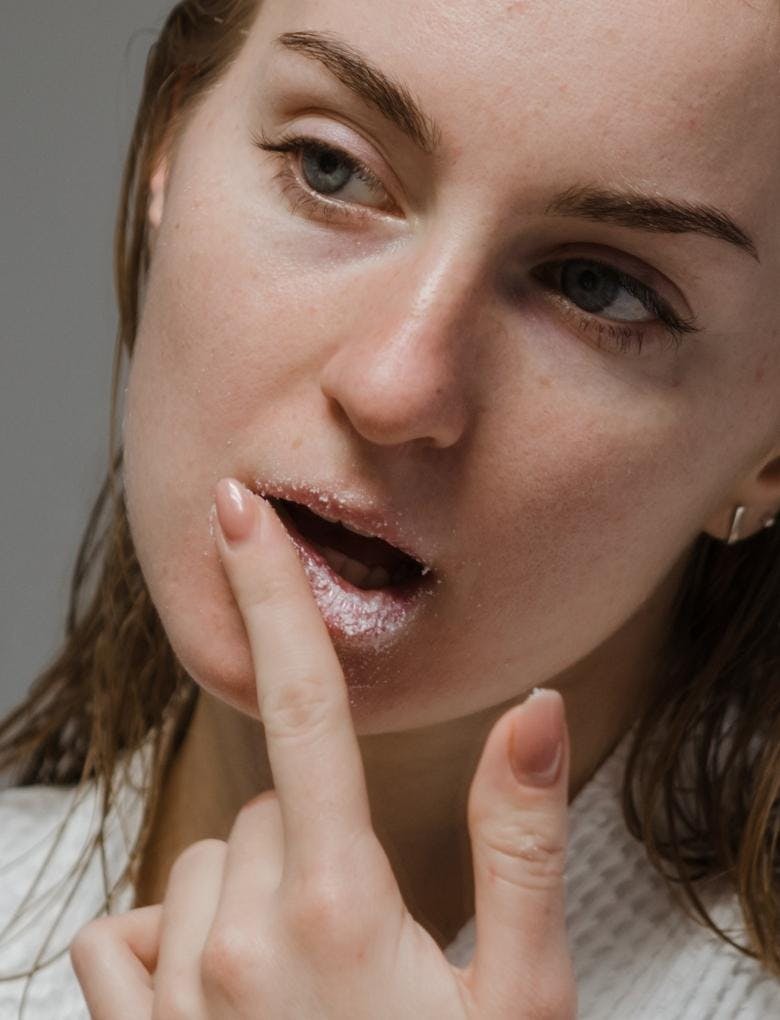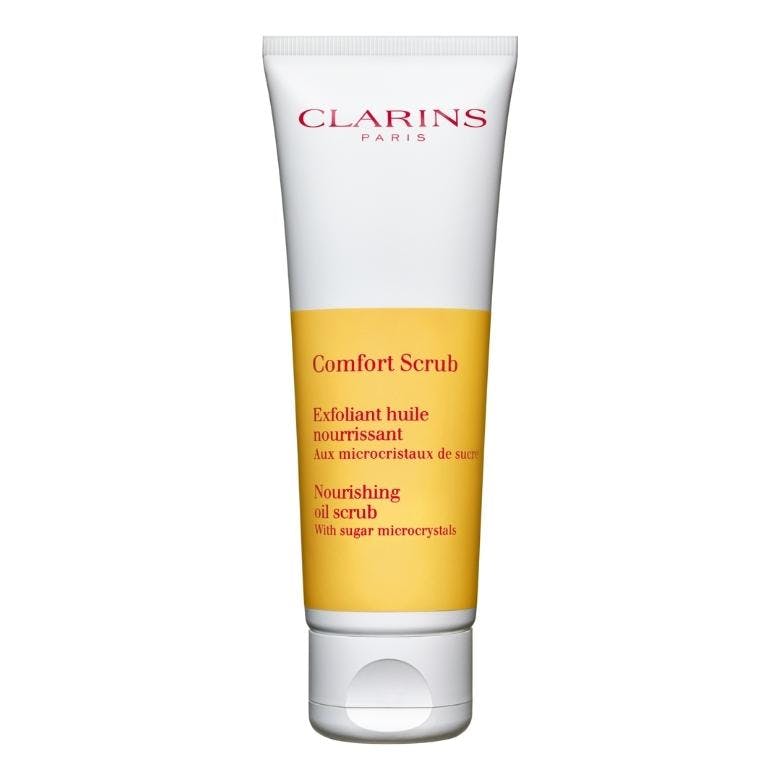Lip Exfoliation 101: How To Use A Lip Scrub The Right Way
4 minutes read
Whether you sport a bright, bold lip every day of the week, or you’re a nude lip kind of person – no matter your preference, exfoliating your lips regularly will keep them looking and feeling great all year round.
If you’re unsure of how to use a lip scrub correctly (or wondering if you even need one), here’s everything you need to know.

What does a lip scrub do?
The skin on your lips is naturally very thin compared to the skin on the rest of your body. Plus, there are no sebaceous (oil) glands on your lips to keep them moisturised – the main reason lips get chapped so easily. It’s also why wrinkles above the lip appear as we age.
But many other factors also contribute to dry lips. According to the American Academy of Dermatology, the common causes of dry lips include cold, dry weather, sun damage and frequent licking.
The secret to keeping them soft and flake-free? Of course, staying hydrated and moisturised are vital. But the extra step that ensures they’re always ultra-smooth is exfoliation. And that’s exactly what a lip scrub is useful for.
A lip scrub helps gently remove dry, rough skin, leaving the surface smooth and prepped for lipstick, gloss or any other product you may want to apply. “Lip prep is a crucial part of make-up application,” says London-based make-up artist Tamara Tott.
The only downside of lip exfoliation? If done incorrectly, you could end up damaging the skin instead. And that’s not what we want. So, here’s how to do it right.
What can you use to exfoliate your lips?
A traditional lip scrub
You can always reach for a conventional sugar scrub – there are tons to choose from. The Fresh Sugar Lip Polish, £15, packed with brown sugar granules, shea butter and jojoba oil, is a cult classic. Or try this one by Ilia that replaces sugar with volcanic stone powder.
Tott loves MAC’s Lip Scrubtious in Sweet Vanilla, £20, another sugar-based scrub with shea butter and jojoba oil. “I leave it on the lips to soak for as long as possible while I’m preparing the rest of the skin. Then I ask my clients to rub the residue with the finger to make sure we get rid of as many flakes as possible,” she reveals. She then follows up with a moisturising lip ointment.
Of course, you could also concoct your own DIY sugar scrub. Just combine equal parts honey and organic raw sugar. Feel free to add a bit of coconut oil for extra moisture.
Your face exfoliator
Don’t want to invest in a lip scrub? Sometimes, your face scrub could do the job, as long as it’s hydrating and not too harsh (you wouldn’t want that for your face either). Clarins Training Manager Charlotte McHale is a fan of using the Comfort Scrub, £26 on the lips too.

Other tools
Some other household items do the job too. For instance, a damp towel, a soft toothbrush (pick one meant for babies) or even a cotton bud. Make sure you apply a thick coat of balm on the lips first.
How to use lip scrub: the do’s and don’ts
Do: apply something moisturising first
A coat of lip balm (preferably something thick and gloopy like Vaseline) will help soften the dry flakes, making them easier to scrub away without damaging the healthy skin underneath. So, leave it on for five to 10 minutes before you start exfoliating.
Don’t: scrub skin that’s damaged
Exfoliation is the act of removing dead skin. That being so, scrubbing may not be the best idea if your lips are sore or bleeding. It could increase inflammation and worsen the damage. Instead, focus on moisturising and healing the skin first.
Try: The Hydra-Essentiel Moisture Replenishing Lip Balm is enriched with blue lotus wax and other moisturising ingredients that help replenish and restore damaged lips.
Do: use circular motions
Scrubbing using small, circular motions will help loosen up the dead skin in the gentlest way possible.
Don’t: overdo it
The skin on your lips is delicate and can tear easily. So, don’t apply pressure as you scrub. Gentle is the way to go. Also, using a lip scrub once or twice a week should suffice, depending on how dry your lips feel. But avoid scrubbing too often.
Do: moisturise after exfoliating
Apply a coat of lip balm immediately after exfoliating – especially if you’re using a scrub that doesn’t already have moisturising properties.
Next read: Can you get bigger lips naturally? Find out here.
Sign up for our newsletter
We will keep you in the loop for special offers, exclusive gifts and product news.
Products You Might Like
BEST-SELLER
BEST-SELLER

